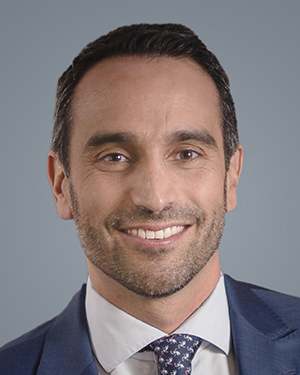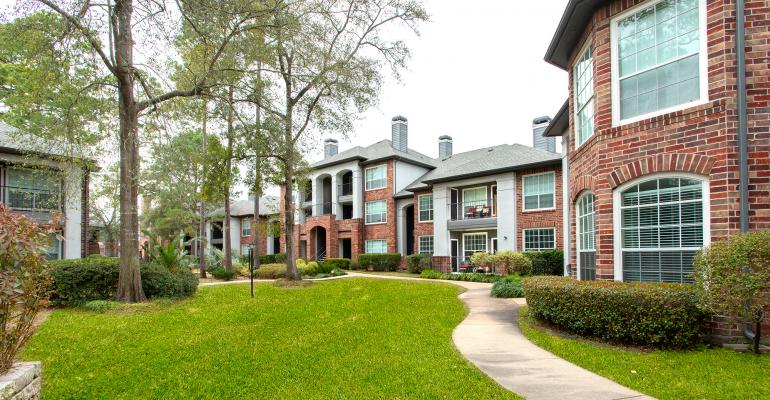Gerardo Mahuad believes investors can buy apartment buildings in diverse neighborhoods, improve the buildings, raise the rents and still have a positive impact on those communities.
He is the co-founder and managing principal of Eagle Property Capital (EPC), a minority-owned private equity fund, based in Miami.
The firm has an 11-year track record of delivering above-target returns to investors, with approximately 6,500 apartments currently in its portfolios, largely in Florida and Texas. Since 2011, the fund manger has acquired, repositioned and managed close to 9,000 apartments at 36 properties and now has approximately $950 million under management. All of these properties are in submarkets where at least 20 percent of the residents are Latino, and all of the EIC staff are either Hispanic or have experience serving the Latino community.
EPC recently announced the initial close of its Fund V, a $400 million, value-added, multifamily fund launched last year with its new joint venture partner, Promecap, Mexico-based, one of the leading private equity firms in Latin America.
EPC also provides social programs to residents at its apartment communities, helping them increase their incomes as rents rise.
“It is a balance. We are seeking certain risk-adjusted returns with a [positive] impact,” says Mahuad. “The properties need to show a clear opportunity to add value—both the property and the residents.”
WMRE caught up with Mahuad to ask how EPC strikes that balance.
This interview has been edited for style, length and clarity.
WMRE: What is the extra value that your fund provides?
 Gerardo Mahuad: We invest in culturally diverse neighborhoods with an “impact” strategy. As value-added players, our strategy includes a significant amount of capital improvements. But we also add value for our residents through special programs.
Gerardo Mahuad: We invest in culturally diverse neighborhoods with an “impact” strategy. As value-added players, our strategy includes a significant amount of capital improvements. But we also add value for our residents through special programs.
We invest in properties with upside potential…. We aim to acquire properties where the rent-to-income ratio is much lower than 33 percent of the household income. For example, in Texas, the threshold is in the low to mid-20s. In Florida, the high 20s… in some cases 30 percent.
We are trying to stay away from flat roofs and properties older than 1970s—we look for sound structure and overall good condition. Our average properties are around 300 units, garden style, in infill locations with strong fundamentals—with economic, employment and population growth, barriers to entry and proximity to employment and education centers… and median incomes above $40,000 within a one-mile radius.
We believe the diversity of our team adds a tremendous amount of value. We have marketing materials in both English and Spanish. We reach out to the target community at neighboring retail stores, restaurants and schools, for example. Minorities are sometimes underserved and neglected. We make sure that they feel welcome and at home in our communities.
We are trying to have an impact on our residents lives. We are seeing also their income grow. We add value for them, for example, through programs that report payments to major credit bureaus that help boost their credit scores—that will also have an impact on their incomes
We also have after school programs so that single parents have time to work in the afternoons. We have English as a second language and Spanish classes that will advance their professional careers. We have personal finance classes and health and wellness education and economic advancement education.
That is how we believe that rent to income will continue to be in safe margins.
WMRE: Have you participated in Fannie Mac or Freddie Mac’s programs to finance workforce housing?
Gerardo Mahuad: The majority of our loans are with Fannie Mae and Freddie Mac… we have been very close and we consider it in every transaction. We hope that we will have one very soon.
WMRE: What kind of yields are you likely to deliver to your investors?
Gerardo Mahuad: Our Fund V we will seek to provide 6 percent average cash on cash distributions upon stabilization and to generate an overall net IRR of 12 percent to 15 percent, net of expenses, management fee and promote during the funds seven-year term.
For the acquisitions in the Fund V, we are being very conservative in the assumptions that we take. If we acquire properties at a low 4 percent we assume that in five years we will sell it at a cap rate that is closer to 5 percent.
Historically, in our realized investment vehicles, we have met and exceeded our returns. IRR’s have ranged in the mid to high 20s, with average multiples of approximately two times. We have achieved these returns with a conservative debt approach, with an average of 65 percent loan-to-cost. What we are gaining is a very attractive risk-adjusted return, and the ability to sleep at night.
WMRE: Who are your equity investors?
Gerardo Mahuad: We have a diverse network of family offices, ultra high-net-worth investors and institutional investors that have supported us since our first fund. We have achieved a reinvestment rate of 75 percent from fund to fund. Our marketing has mostly been from referrals from current investors.
The interest from institutional investors certainly grows as you establish a successful track record. We also expect that our partnership with Promecap will bring more institutional capital.
WMRE: Do you put your own equity into your funds?
Gerardo Mahuad: For sure—we believe so much in what we are doing… the managers’ co-investment is a minimum 5 percent of the committed capital.
WMRE: Did the coronavirus pandemic reveal anything about your communities?
Gerardo Mahuad: We saw how resilient our properties and our residents have been and our team has been. Everyone has really stepped up to the challenge and really brought the best of themselves. That was very inspiring to me.
The lowest level of collections in 2020 was 96.6 percent. That is really strong and close to the 98 percent average that we have. And the rest, the delinquency, still got paid because we were able to work with our residents on payment plans.
WMRE: Do you believe that the cultural sensitivity, the connections between residents and the language skills that your property teams provide made a difference?
Gerardo Mahuad: Everything counts. Everything that we have talked about for sure is part of what brought the receipts and the retention and is part of our strategy or our ‘secret sauce.’





